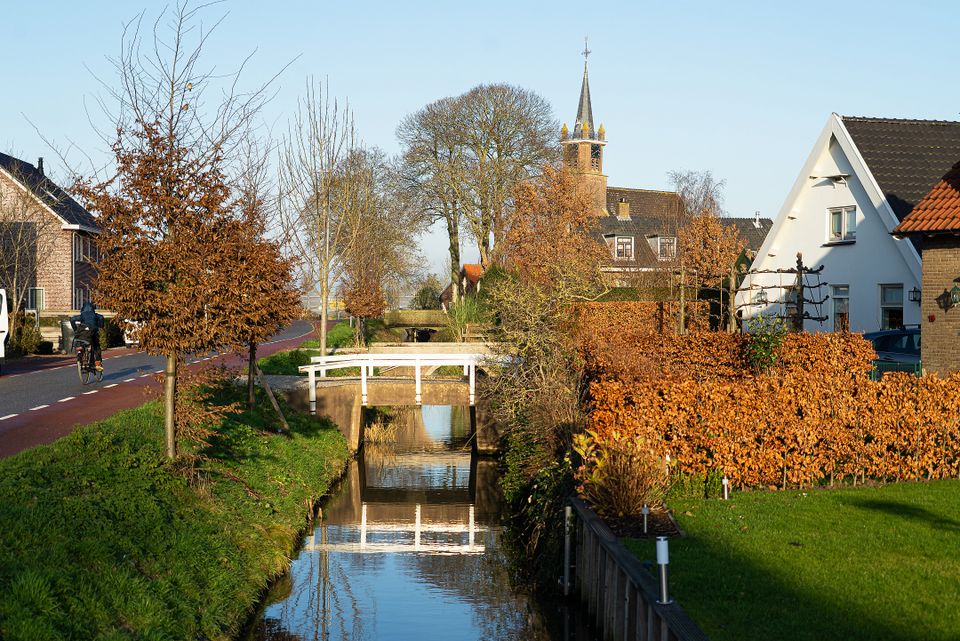
Like many other villages and towns in the region, the origins of Zijderveld go back to the Middle Ages. The village was built at a crossroads of perpendicular dikes (zijdewendes): wharves of the cope reclamations. The mediaeval church and village centre are set on a naturally higher and therefore drier tract of land. To prevent flooding due to soil subsidence, many houses and farms were built on artificial elevations or mounds. The map of the village remained virtually unchanged until the 20th Century. Today, there are not many remnants of the historic buildings left. New building and the construction of the national highway between Utrecht and ‘s-Hertogenbosch in 1936 transformed the village. The central Dorpsweg thus became a dead-end street.
While the village of Zi…
Like many other villages and towns in the region, the origins of Zijderveld go back to the Middle Ages. The village was built at a crossroads of perpendicular dikes (zijdewendes): wharves of the cope reclamations. The mediaeval church and village centre are set on a naturally higher and therefore drier tract of land. To prevent flooding due to soil subsidence, many houses and farms were built on artificial elevations or mounds. The map of the village remained virtually unchanged until the 20th Century. Today, there are not many remnants of the historic buildings left. New building and the construction of the national highway between Utrecht and ‘s-Hertogenbosch in 1936 transformed the village. The central Dorpsweg thus became a dead-end street.
While the village of Zijderveld itself dates from the Middle Ages, the area has seen human habitation for much longer. Archaeological excavations have shown traces of fences and farms dating from the Bronze Age and Iron Age. The name Zijderveld also refers to an older period of history. For centuries, a ‘veld’ was used as the name for an area where farmers collected berries and fruits and released their pigs to look for acorns. From the 13th Century, a field (‘veld’) is the name for the first farmlands.
Further reading: Zijderveld church, Zijderveldselaan, Cope reclamation, Helsdingen district, Willow landscape and the Bolgarian forest.
